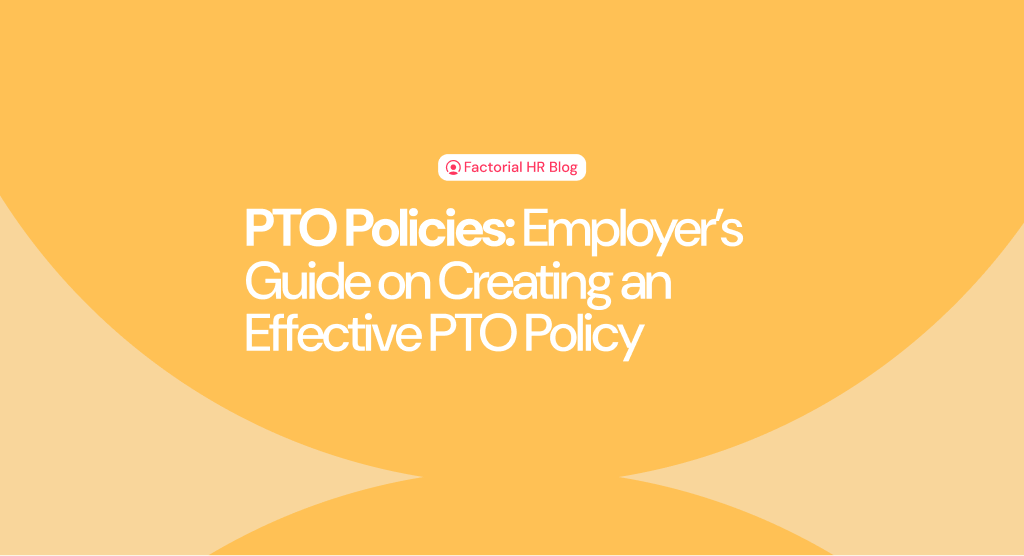Corporate communication is at the heart of every successful business. It’s how you connect with your employees, customers, investors, and the public. When done right, it strengthens relationships and keeps your business running smoothly. However, without a clear plan, corporate communication can easily become confusing or ineffective.
That’s where a corporate communication strategy comes in. Having a solid plan ensures that your messages are clear and consistent and reach the right people at the right time. In this article, we’ll explore what corporate communication is, why it’s so important to have a solid strategy in place, and how you can plan and implement an effective communication strategy for your business.
What is Corporate Communication?
Corporate communication is how a company communicates with everyone it interacts with. This includes employees, customers, investors and the media, as well as the public in general. It’s the way a company shares information, builds relationships, and manages its reputation and employer brand. Good corporate communication ensures that everyone is on the same page and that the right message gets to the right people at the right time.
There are four key areas of corporate communication:
- Internal communication. This is how a company communicates with its employees. Keeping them informed, motivated, and engaged is key to building a positive organizational climate. It includes things like team meetings, newsletters, and internal updates.
- External communication. This is how a company talks to customers, investors, and the media. It helps build the company’s image, strengthen relationships, and make sure the public gets accurate information about the company’s products and services.
- Public relations. PR is all about managing the company’s reputation. It involves media relations, handling public perception, and making sure the company comes across in a positive light.
- Crisis communication. Sometimes, things don’t go as planned. During a crisis, corporate communication becomes critical. Strong corporate communication skills help a company respond quickly, stay transparent, and protect its reputation.
Why Do You Need a Corporate Communication Strategy?
Corporate communication isn’t just about passing on information. It’s about making sure everyone feels connected and knows what’s going on. A good communication strategy keeps your team aligned and helps them make smarter decisions. It builds stronger relationships and protects your brand and reputation during tough times. Simply put, a strong communication strategy keeps your business running smoothly, keeps everyone informed, and keeps your brand safe when challenges arise.
Let’s explore the benefits of implementing a solid corporate communication strategy in a bit more detail.
Building Brand Awareness and Consistency
Corporate communication helps create a strong brand. When your messaging is consistent across all platforms, from social media to emails, people start to recognize and trust your brand. In fact, studies show that consistent branding can boost revenue by up to 23%. When everything you say matches your values and tone, customers and employees know what to expect. It makes your brand feel familiar and reliable, which helps build loyalty. The key is making sure that your message is always clear and consistently familiar, no matter where it’s coming from. This makes it more likely that people will remember you and feel connected to your brand.
Enhancing Employee Engagement and Morale
When your employees are kept in the loop, they feel more engaged with the company. Regular updates and open lines of internal communication help them stay connected to the bigger picture. Don’t just take our word for it. Studies show that 85% of employees feel more motivated when management keeps them updated with company news. This isn’t just about sharing news; it’s about making them feel like part of the team. When employees understand where the company is heading and how their work fits in, they feel more valued and invested. Clear, ongoing communication creates a positive environment and boosts morale. And the more engaged your employees are, the more likely they are to stay and perform their best.
Crisis Communication and Protecting Reputation
When a crisis hits, how you communicate can make a huge difference. Whether it’s a mistake or something unexpected, a clear and quick response can help protect your company’s reputation. Having a solid corporate communication strategy in place lets you act fast. It ensures everyone knows how to respond and what to say, which keeps things under control. The goal is to be transparent and stay ahead of the situation. Good corporate communication and management in times of crisis builds trust with both your team and your customers, helping you recover faster and maintain your reputation.
Strengthening Relationships with Stakeholders
Good communication is the foundation of strong stakeholder relations. For investors, keeping them informed about how the company is doing builds trust. With customers, regular updates and honest communication make them feel valued and loyal. Open talks with partners help create strong, reliable working relationships. As for the media, staying connected ensures your company’s story is told right. By communicating clearly with all these groups, you build trust, improve loyalty, and keep things running smoothly.
Reducing Miscommunication
Good corporate communication skills are the backbone of efficiency. When your team knows what’s going on, they can collaborate more effectively and get things done faster. Despite this fact, studies show that, although 75% of employers consider teamwork and collaboration to be very important, only 18% of employees receive regular communication evaluations during their performance reviews. This lack of communication often results in confusion and delays.
A solid corporate communication plan clears up this miscommunication by making sure everyone has the right information when they need it. It helps everyone stay on the same page, so things get done faster and with fewer mistakes. When corporate communication management is efficient, teams collaborate better, decisions get made quicker, and everyone can focus on what really matters.
Aligning Communication with Business Goals
Finally, when your corporate communication strategy aligns with your business goals, everyone understands how their work fits into the company’s vision. Employees feel more motivated when they understand how their efforts contribute to the bigger picture. Engaged employees are more likely to stick around and work hard.
Essentially, a corporate communication strategy ensures that everyone, from the CEO to the newest hire, is on the same page. When you connect your messages with your business objectives, it drives focus and keeps your team moving in the right direction. Everyone knows what they’re working toward, and it creates a sense of purpose that drives success.
How to Build a Corporate Communication Strategy: Key Steps
Building a corporate communication strategy doesn’t have to be complicated. It’s about making sure your company’s messages are clear, your audience is engaged, and your goals are met.
The following key steps will walk you through the process, whether you’re starting from scratch or improving your current approach.
Review Your Current Communication Practices
Start by taking a good look at how you’re currently communicating. Are your employees well informed? Do your customers understand your products and values? Look at what’s working and where things could be better. This step helps you identify gaps in your current communication so you can build a strategy that fills those holes. Understanding where you stand helps set a solid foundation for your strategy.
Define Your Communication Goals
Next, think about what you want your communication strategy to achieve. Do you want to improve internal team collaboration? Build stronger customer relationships? Whatever your goal, make sure you set clear, specific goals that you can measure. For example, if you want to improve employee engagement, a goal could be to increase participation in company-wide updates. By defining your goals, you give your communication strategy a clear focus, making it easier to track success.
Identify Your Target Audience
Knowing who you’re talking to is key. Are you communicating with your employees, customers, investors, or the media? Each group has different needs and expectations, so the way you communicate with them should vary. If you’re talking to employees, it might be more about keeping them informed and motivated. For customers, it’s about building trust and loyalty. Understanding your audience helps you tailor your messages so they’re more relevant and effective.
Develop Clear Messaging
Now it’s time to decide what you’re going to say. Your message should be simple, clear, and aligned with your company’s values. Whether you’re sending an email to your team or posting on social media for customers, make sure your message is easy to understand. Stay consistent with your tone and language across all channels so people always know what to expect. Clear messaging helps avoid confusion and keeps everyone on the same page.
Choose the Right Communication Channels
Not all corporate communication channels work for every message or audience. Think about where your audience spends their time. Do your employees check their email regularly? Do your customers follow you on social media? Whether it’s email, social media, meetings, or newsletters, pick the channels that make the most sense for your audience. The right channels ensure that your messages are seen, heard, and acted upon.
Set Up a Feedback Loop
A good corporate communication strategy goes both ways. After sharing your messages, it’s important to listen and gather feedback. This could be through surveys, informal check-ins, a suggestion box, or simply asking for feedback in one-on-one meetings. Feedback helps you understand if your messages are getting through and whether your strategy is effective. Plus, when people know their opinions matter, it strengthens relationships and builds trust.
Measure and Adjust
Finally, once your strategy is in motion, it’s important to check how things are going. Are people engaged? Are you hitting your goals? Use simple metrics like survey results, email open rates, or social media engagement to measure success. If something isn’t working, adjust it. A good corporate communication strategy is always evolving, and by measuring and tweaking as you go, you’ll keep improving and meeting your business goals.
The Role of Technology in Corporate Communication
Technology has completely changed the way businesses communicate. It’s no longer just about emails or meetings. Today, there are countless tools that make it easier and faster to share information, collaborate with teams, and keep everyone on the same page. Whether it’s helping employees stay connected, gathering feedback, or improving communication with customers, the right technology makes a world of difference.
With Factorial’s all-in-one software, you get everything in one place, from employee feedback and collaboration tools to event management and performance tracking. These features make it easier for your team to stay connected, informed, and engaged. Let’s explore how these features can help improve your company’s communication and boost overall productivity.
Internal Communication Tools
Factorial’s internal communication tools are a game changer for keeping your team connected. With everything in one place, employees can easily find important updates, announcements, and company news. Instead of hunting through endless emails or trying to remember where something was posted, they can access all the info they need directly through the employee self-service portal. You can create dedicated spaces for different teams or projects, so everyone can stay updated on what’s most relevant to them. This ensures that the right people get the right information at the right time, keeping everyone on the same page.
Whether it’s a company-wide announcement or a smaller team update, Factorial’s communication tools help make sure messages are clear and easy to find. It helps reduce misunderstandings and keeps your workplace running smoothly, all while boosting transparency and engagement within the team.
Event Management Features
Planning and organizing events can be a hassle, but Factorial’s event management features make it so much easier. Whether it’s a team-building event, a training session, or a company-wide meeting, you can easily set everything up within the platform. You can send out invitations, track RSVPs, and send reminders so no one forgets about the event. Factorial makes it simple for everyone to stay in the loop, no matter how busy they are.
In addition to the above, you can also keep track of event details, including location, schedule, and special instructions, all in one place. This helps save time and ensures your events run smoothly. It also makes it easier to measure the success of events afterwards, using built-in feedback features. By making event planning simple and organized, Factorial helps improve attendance and participation and strengthens connections within your team.
Employee Feedback Mechanisms
Getting feedback from your team is essential, but it can be tricky to gather it in a way that’s easy and effective. Factorial makes this process simple. With its employee feedback tools, you can quickly set up surveys or suggestion boxes, giving employees a chance to share their thoughts on everything from company updates to internal processes. This creates an open space where employees feel comfortable voicing their opinions, helping the company stay responsive to their needs. And when employees see their feedback is heard and valued, they feel more engaged. Regular feedback also helps spot potential issues early, allowing you to make improvements before they become bigger problems.
Collaboration Tools
Effective collaboration is key to any successful team, and Factorial’s collaboration tools make it easy to work together, no matter where your team is located. Whether you’re in the office or working remotely, the platform lets you chat in real time, share files, and assign tasks, all in one place. This eliminates the need for endless email threads and helps keep communication organized. With shared calendars and project management features, everyone can stay on track and keep up with deadlines.
Factorial also makes it easy to break down bigger projects into smaller tasks and assign them to the right team members. This keeps everyone accountable and ensures nothing falls through the cracks. The best part is that the tools are simple to use, making it easier for your team to focus on what matters most: getting the job done efficiently and working together to achieve your goals.

Performance Tracking and Analytics
Finally, Factorial’s performance management software gives you valuable insights into how well your corporate communication strategy is working. With performance tracking, you can see how engaged employees are with your communications, whether they’re reading your updates or participating in surveys. These insights help you figure out what’s working and what needs improvement. For example, if employees aren’t engaging with certain updates, you can tweak your messaging or delivery to make it more effective. The data you gather helps you refine your corporate communication strategy, making it more targeted and efficient.
Ultimately, with Factorial, you have everything you need to take your corporate communication strategy to the next level. Our all-in-one platform streamlines communication, boosts collaboration, and simplifies feedback, helping your team stay connected and focused on what really matters: growing your business.











